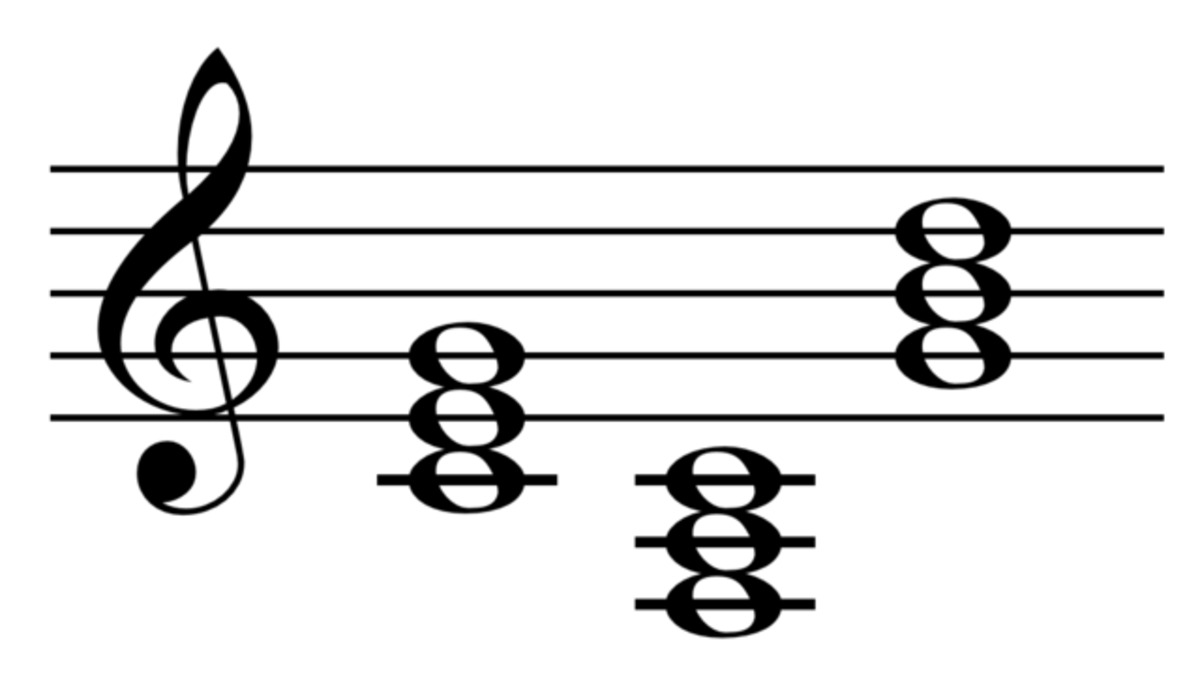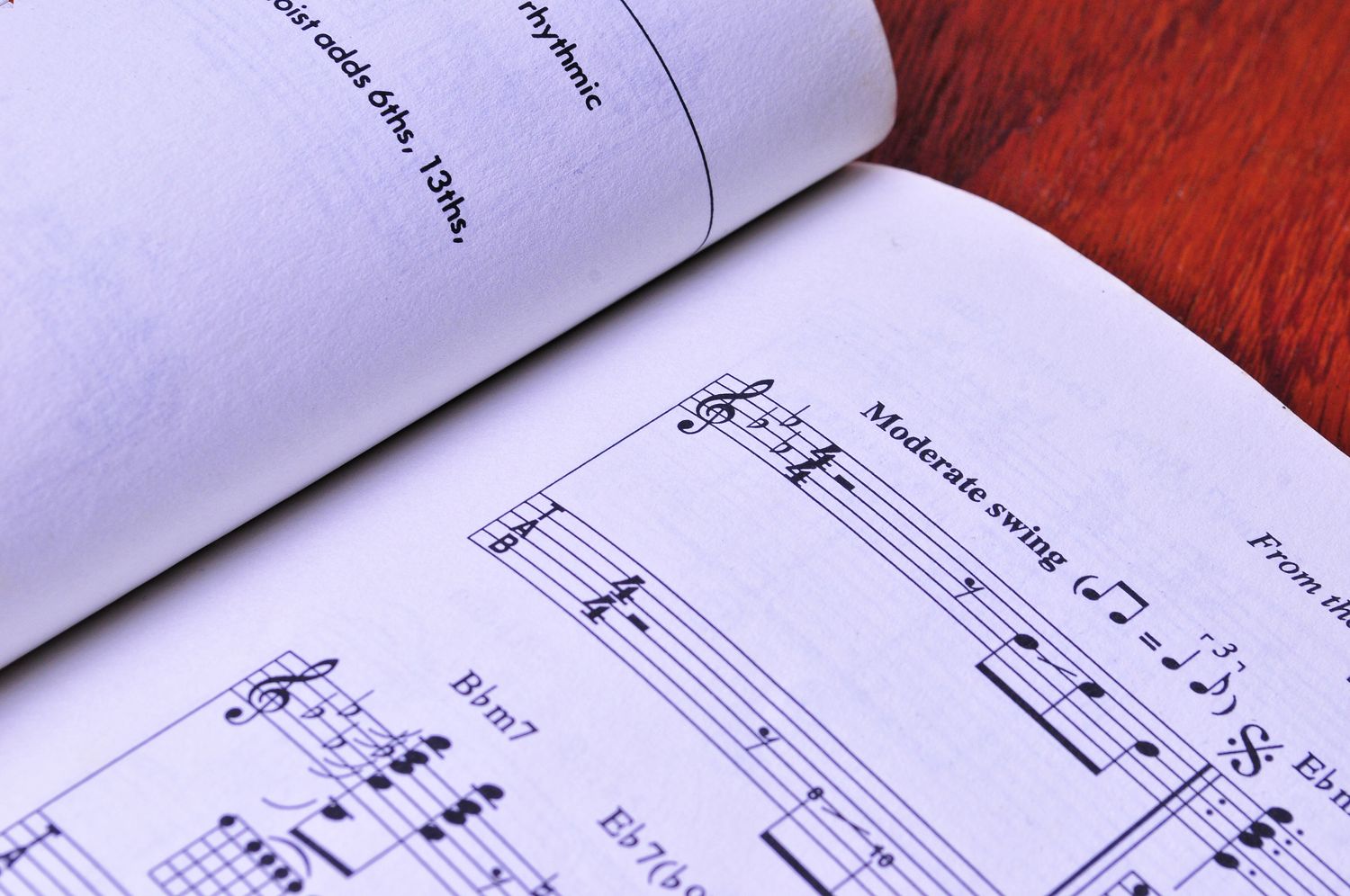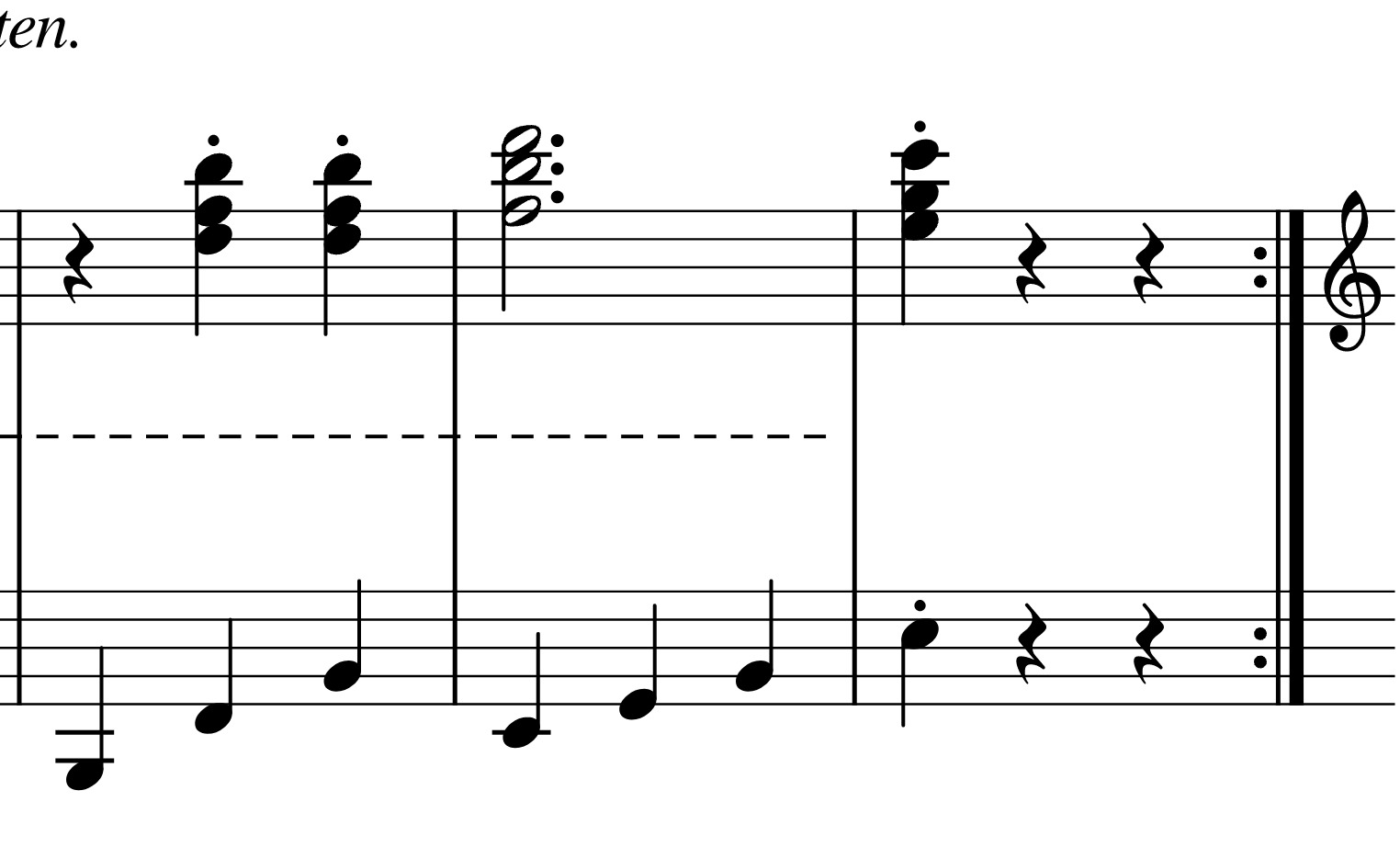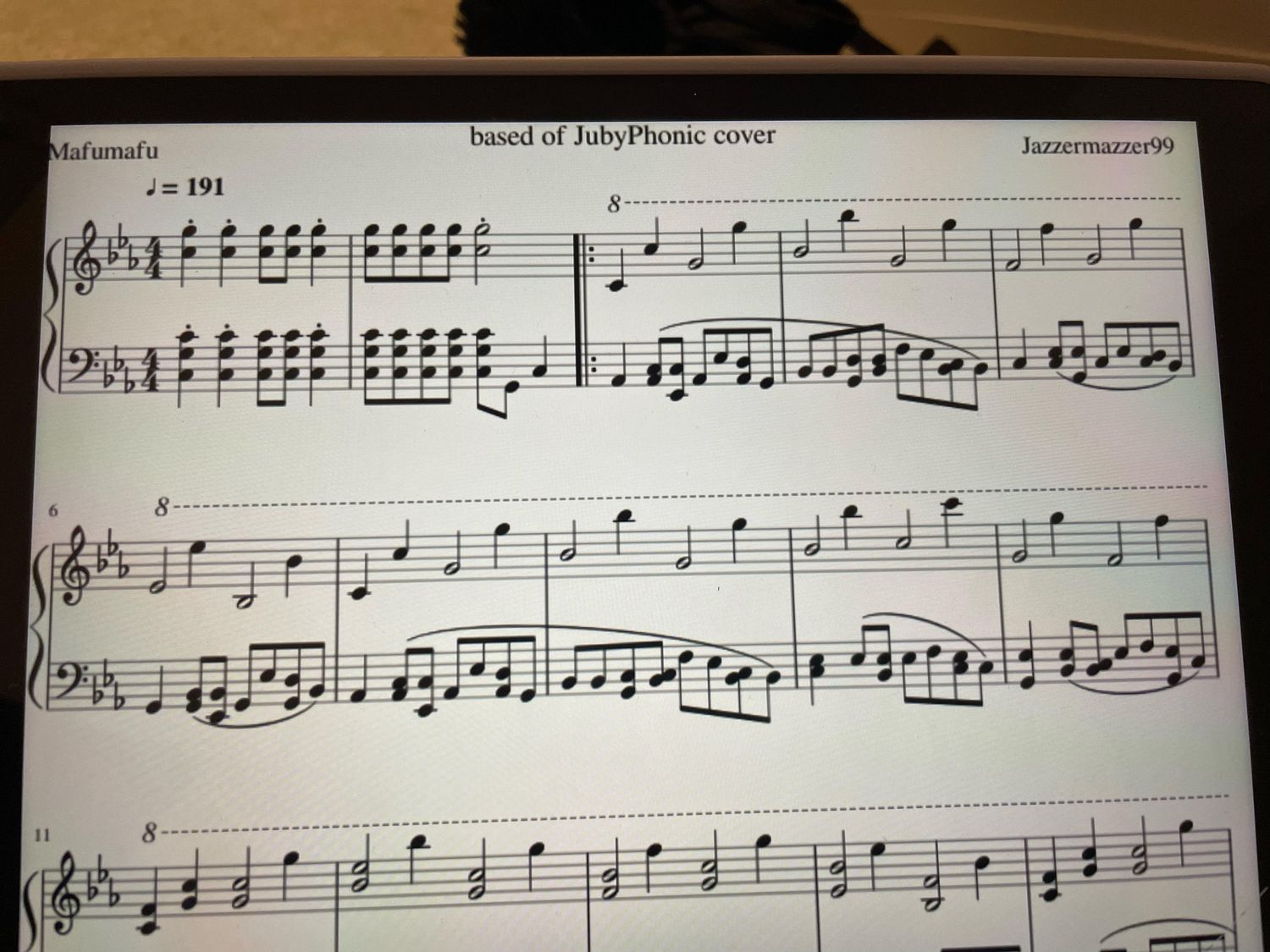Home>Production & Technology>Music Theory>What Is A Triad Music Theory


Music Theory
What Is A Triad Music Theory
Modified: February 15, 2024
Discover the fundamentals of music theory with our comprehensive guide to triads. Dive into the world of chords, harmony, and melodic structure and enhance your understanding of Music Theory.
(Many of the links in this article redirect to a specific reviewed product. Your purchase of these products through affiliate links helps to generate commission for AudioLover.com, at no extra cost. Learn more)
Table of Contents
Introduction
Welcome to the world of triads in music theory! Whether you’re an aspiring musician, a music lover, or just curious about the intricacies of music construction, understanding triads is essential. Triads form the building blocks of harmony, allowing us to create melodies, chords, and progressions that evoke emotions and captivate listeners.
So, what exactly is a triad? In music theory, a triad is simply a three-note chord consisting of a root, a third, and a fifth. These three notes are the foundation of harmony and provide the necessary structure and tension to create harmonically rich and vibrant pieces of music.
The study of triads involves understanding their different qualities, inversions, progressions, and applications in composition. By exploring the intricacies of triads, we can analyze and appreciate the harmonic elements of various genres, from classical compositions to pop songs.
In this comprehensive guide, we will take a deep dive into the world of triads, exploring their basic principles, qualities, inversions, progressions, and their application in music composition. Whether you’re a beginner or an experienced musician, this article will serve as a valuable resource to expand your knowledge of music theory and enhance your musical creations.
Definition of Triad
Before we delve into the intricacies of triads, let’s start with a clear definition. In music theory, a triad is a three-note chord consisting of a root, a third, and a fifth. These three notes are stacked vertically or played simultaneously, creating a harmonically pleasing sound.
The root of a triad is the starting note or the foundation upon which the chord is built. It provides the tonal center and determines the overall quality of the chord.
The third of a triad is the note that is two whole steps, or intervals, away from the root. It is responsible for establishing the chord’s major or minor quality. A major third creates a major triad, while a minor third produces a minor triad.
The fifth of a triad is the note that is four whole steps, or intervals, away from the root. It contributes to the stability and completeness of the chord.
Triads are often represented using Roman numerals, with uppercase roman numerals representing major triads and lowercase roman numerals representing minor triads. For example, a major triad built on C would be written as “C” or “I,” while a minor triad built on A would be written as “A” or “vi”.
Understanding the definition of a triad is crucial as it forms the foundation for further exploration of music theory concepts, such as chord progressions and harmonic analysis. By grasping the essence of triads, you’ll be better equipped to analyze and create harmonically rich and interesting musical compositions.
Basic Principles of Triad Music Theory
Triad music theory is built on several fundamental principles that govern the construction and usage of triads in music. Understanding these principles will not only deepen your knowledge of music theory but also enhance your ability to create and appreciate harmonically rich compositions.
1. Major and Minor Qualities: The quality of a triad is determined by the type of third interval used. A major triad consists of a major third followed by a minor third, while a minor triad consists of a minor third followed by a major third. These qualities impart distinct emotions and moods to the music, with major triads often associated with brighter, happier sounds, and minor triads associated with sadder, darker tones.
2. Root Position and Inversions: Triads can be played in different positions and inversions, which alter the order of the notes while still maintaining the same three pitches. Root position is when the root note is the lowest pitch, while inversions occur when either the third or the fifth is played as the lowest pitch. Inversions can provide a sense of movement and smooth voice leading in chord progressions.
3. Voice Leading: Voice leading is the smooth and melodic movement of individual voices or parts in a musical composition. In the context of triads, voice leading refers to the movement of notes from one triad to another in a progression. Smooth voice leading is often achieved by keeping common tones between chords and minimizing large leaps or awkward intervals.
4. Harmonic Analysis: Triads serve as the foundation for harmonic analysis in music. By analyzing the different triads used in a piece, you can gain insight into the harmonic progression, key centers, and tonal centers of the music. This knowledge allows you to interpret and appreciate the composer’s intentions, as well as make informed decisions when creating your own compositions.
5. Chord Progressions: Triads are crucial in the construction of chord progressions, which are a series of chords played in succession. Understanding the principles of chord progressions, such as the use of tonic, dominant, and subdominant triads, can help create a sense of tension and release, establish tonal centers, and create memorable musical phrases.
By grasping the basic principles of triad music theory, you’ll be able to analyze, create, and appreciate the harmonic elements of music on a deeper level. Whether you’re composing, improvising, or analyzing a piece, having a solid understanding of these principles will enrich your musical journey and expand your creative possibilities.
Major Triads
Major triads are a fundamental component of music theory and are widely used in various genres of music. These triads possess a bright and uplifting quality, making them essential for creating melodies, harmonies, and chord progressions that evoke feelings of joy, triumph, and positivity.
A major triad consists of a root, a major third, and a perfect fifth. The major third interval between the root and the third creates a sense of brightness, while the perfect fifth interval between the root and the fifth adds stability and support.
To construct a major triad, let’s use the example of a C major triad. The root note is C, the major third interval is E, and the perfect fifth interval is G. When played simultaneously, these three notes create a harmonically pleasing and firmly grounded chord.
In music notation, major triads are typically represented by just the root note, such as C, followed by a capital letter, or by using Roman numerals with uppercase letters, such as I. These notations vary depending on the context of the music and the style of notation being used.
In addition to being used as standalone chords, major triads play a crucial role in chord progressions. They often serve as the tonic, or home, chord in a key, providing a sense of resolution and stability. Major triads can easily transition to other chords, creating pleasing and smooth progressions that drive the harmonic movement of a piece.
Some common progressions utilizing major triads include the I-IV-V progression, which is prevalent in rock and blues music, as well as the famous I-V-vi-IV progression found in countless pop songs.
Major triads can also be used to create melodic lines. By arpeggiating the triad notes or incorporating them into a melody, you can add a sense of brightness and motion to your compositions.
Whether you’re strumming chords on a guitar, playing a keyboard, or composing on a digital audio workstation, major triads are an essential tool in your musical arsenal. Understanding their construction, qualities, and applications will empower you to create uplifting and melodically captivating pieces of music.
Minor Triads
Minor triads are fundamental elements of music theory that add depth and emotional complexity to compositions. These triads are widely used in various genres, from classical to jazz, and are known for their melancholic, mysterious, and introspective qualities.
A minor triad consists of a root, a minor third, and a perfect fifth. The minor third interval between the root and the third creates a sense of darkness and introspection, while the perfect fifth interval adds stability and support to the chord.
Let’s use the example of an A minor triad to understand its construction. The root note is A, the minor third interval is C, and the perfect fifth interval is E. When played together, these three notes create a haunting and evocative chord that is often associated with sadness and introspection.
In music notation, minor triads are represented by just the root note, such as A, followed by a lowercase letter, or by using Roman numerals with lowercase letters, such as vi. These notations may vary depending on the style of notation being used.
Similar to major triads, minor triads have an essential role in chord progressions and harmonic movement. They often function as the “subdominant” chord, providing a sense of tension and leading to a resolution on a major tonic chord. Minor triads can create a sense of drama and sadness when used effectively in progressions.
Popular progressions that utilize minor triads include the vi-IV-I-V progression, which is commonly employed in pop music, as well as classical progressions like the i-iv-VII progression found in many classical compositions.
Minor triads can also be used to create expressive melodies and emotional lines. By incorporating the notes of the triad into a melody, you can evoke a wide range of emotions and add depth to your compositions.
Understanding the construction, qualities, and applications of minor triads will expand your creative possibilities and enable you to infuse your compositions with a deeper emotional impact. Whether you’re writing a melancholic ballad or creating a hauntingly beautiful soundtrack, minor triads are an essential tool for capturing the complex and nuanced emotions of music.
Diminished Triads
Diminished triads are unique and intriguing chords that add tension and dissonance to music. These triads are commonly found in jazz, classical, and film music, and are known for their mysterious and unresolved quality.
A diminished triad consists of a root, a minor third, and a diminished fifth. The minor third interval between the root and the third adds a sense of melancholy, while the diminished fifth interval creates a dissonant and unstable quality to the chord.
To construct a diminished triad, let’s use the example of a B diminished triad. The root note is B, the minor third interval is D, and the diminished fifth interval is F. When played together, these three notes form a tense and unresolved chord that can evoke a sense of suspense or unease.
In music notation, diminished triads are often represented by just the root note followed by a small superscript circle, like B°, or by using Roman numerals with lowercase letters and a superscript circle, such as vii°.
Diminished triads have a distinctive role in chord progressions and harmonic movement. They are frequently used as passing chords or transitional chords to create movement and tension leading to a resolution. Diminished triads can enhance the chromaticism in a piece of music and provide a sense of unpredictability.
Common progressions that feature diminished triads include sequences like vii°-I, which creates a sense of resolution, or vii°-iii-IV, which creates a continuous cycle of tension and release.
In addition to their use in harmonies, diminished triads can also be used as melodic devices. Incorporating the notes of the triad into a melody can create a haunting and mysterious atmosphere.
Understanding the construction, qualities, and applications of diminished triads opens up new possibilities for creating tension and adding complexity to your compositions. Whether you’re looking to create a sense of suspense or explore dissonance in your music, diminished triads can add a unique flavor and intrigue to your harmonic palette.
Augmented Triads
Augmented triads are striking and intriguing chords that add a sense of tension and excitement to music. These triads are commonly found in jazz, classical, and contemporary music, and are known for their bold and adventurous quality.
An augmented triad consists of a root, a major third, and an augmented fifth. The major third interval between the root and the third creates a sense of brightness, while the augmented fifth interval adds a unique and dissonant quality to the chord.
To construct an augmented triad, let’s use the example of a C augmented triad. The root note is C, the major third interval is E, and the augmented fifth interval is G#. When played together, these three notes form a distinctive and vibrant chord that can create a sense of anticipation and adventure.
In music notation, augmented triads are often represented by just the root note followed by a plus sign (+), like C+, or by using Roman numerals with uppercase letters and a plus sign, such as I+.
Augmented triads have a unique role in chord progressions and harmonic movement. They can be used as passing chords to create tension and lead to a resolution, or as standalone chords to add an unexpected and exciting twist to a musical phrase. They are also commonly used as dominant chords to create a sense of anticipation and prepare the listener for resolution.
Common progressions that utilize augmented triads include sequences like I-V+vi, which creates a distinctive and adventurous sound, or I+ – IV, which creates a chromatic movement and adds tension to the progression.
In addition to their use in harmonies, augmented triads can also be used to create melodic tension and ambiguity. Incorporating the notes of the triad into a melody can add a sense of unpredictability and create a captivating musical journey.
Understanding the construction, qualities, and applications of augmented triads can add a unique and exciting flavor to your compositions. Whether you’re looking to create tension, venture into new harmonic territory, or add a touch of unpredictability to your music, augmented triads offer a powerful tool for expanding your creative possibilities.
Inversions of Triads
Inversions are alternate voicings of a triad that give the chord a different sonic character. They occur when a note other than the root is played as the lowest note in the chord. Inversions are an important concept in triad music theory as they provide different tonal and textural possibilities and allow for smoother voice leading in musical compositions.
There are three main types of inversions for triads: first inversion, second inversion, and third inversion.
1. First Inversion: In first inversion, the third of the triad becomes the lowest note. For example, if we take a C major triad (C-E-G) and play the E as the lowest note, we have a C/E chord. This inversion introduces a different tonal color to the chord and can create a sense of lightness or instability.
2. Second Inversion: In second inversion, the fifth of the triad becomes the lowest note. Using the same C major triad example, if we play the G as the lowest note, we have a C/G chord. This inversion gives the chord a grounded and solid quality and can serve as a strong foundation for harmonic progressions.
3. Third Inversion: Third inversion occurs when the seventh or added note of the chord becomes the lowest note. This inversion is more commonly used in extended chords and is less frequently used with triads.
Inversions are highly useful when creating chord progressions and facilitating smooth voice leading. By using inversions, you can create more interesting and diverse harmonic movements, making your compositions sound more sophisticated and pleasing to the ear.
Inversions can also offer practical benefits for musicians playing instruments like the piano or guitar. By utilizing inversions, you can find more efficient fingerings and achieve smoother transitions between chords.
It’s worth noting that while inversions provide a different musical flavor, the quality of the triad (major, minor, augmented, or diminished) remains the same. The inversion simply changes the order in which the notes are stacked.
By incorporating inversions into your musical vocabulary, you can enhance your harmonic palette and create more compelling and nuanced compositions. Experiment with different inversions to discover unique and interesting chord voicings that will enrich your musical creations.
Triad Progressions
Triad progressions are sequences of triads played in succession, forming the backbone of harmonic movement in music. These progressions provide a framework for creating melodies, establishing tonal centers, and evoking different emotions. Understanding triad progressions is essential for composing, improvising, and analyzing music.
There are various types of triad progressions, each with its own unique characteristics and emotional impact. Here are a few common ones:
1. Circle of Fifths: The circle of fifths progression is a classic and widely-used sequence that moves in fifths (or fourths) between triads. For example, starting with a C major triad, we can move to its fifth, G major, and continue the progression by moving to the fifth of G, which is D major, and so on. This progression creates a sense of resolution and stability, as the chords move through the cycle and eventually return to the tonic.
2. Descending Bass: Descending bass progressions involve moving the bass note of each triad in a descending pattern. The most common example of this is the vi-IV-I-V progression, where each triad is played with the root note descending by a whole step. This progression is widely used in pop music and creates a catchy and memorable sequence.
3. Chromatic Progressions: Chromatic progressions involve using triads that are next to each other in the chromatic scale. These progressions create tension and a sense of forward motion. One popular chromatic progression is the chromatic mediant, which involves moving between triads that are a third apart but have one common tone. For example, moving from C major to E-flat major or from A minor to C-sharp minor.
4. Pivot Chord Progressions: Pivot chord progressions involve using a common chord or triad that acts as a pivot between two different keys or tonal centers. By using a pivot chord, you can smoothly transition between different harmonic contexts and create unexpected and interesting progressions.
Triad progressions can be used in many musical contexts, from simple pop songs to complex classical compositions. They provide a foundational structure for melodies, harmonies, and chord progressions. By understanding the principles behind these progressions, you can create compelling and emotionally engaging music.
Experimenting with different triad progressions, adding variations, and incorporating inversions can help you develop your unique musical style. Whether you’re analyzing existing pieces, improvising on your instrument, or composing your own music, a solid understanding of triad progressions will greatly enhance your musical abilities and creative possibilities.
Application of Triads in Music Composition
Triads play a crucial role in music composition, offering a wide range of possibilities for creating harmonies, melodies, and chord progressions. With their simplicity and versatility, triads serve as the foundation for countless musical compositions across various genres. Here are some key applications of triads in music composition:
1. Harmonization: Triads are used to harmonize melodies, adding depth and richness to the overall sound. By selecting triads that complement the melody notes, composers can create harmonies that enhance the emotional impact and expressiveness of the music.
2. Chord Progressions: Triads form the building blocks of chord progressions. Composers can create dynamic and captivating progressions by carefully selecting and sequencing triads, allowing for tension and release, and leading the listener through a musical journey. This aspect is central to establishing the tonal center of a composition and providing structure and direction to the music.
3. Modulation: Triads can be used to modulate, or transition, from one key to another. By smoothly transitioning between different triads, composers can change the tonal center and create a sense of movement and exploration within a composition.
4. Texture and Layering: Triads can be used to create various textures and layers in a composition. By stacking multiple triads on top of each other, composers can create dense and harmonically complex passages. Alternatively, using sparse triads can create a more minimalistic and airy texture.
5. Emotional Expression: Triads, with their different qualities (major, minor, augmented, diminished), can evoke a wide range of emotions in music. Composers can leverage the specific emotional qualities of triads to enhance the overall mood and effect of their compositions.
6. Cadences: Triads form the basis of cadences, which are melodic or harmonic phrases that provide points of arrival or resolution in a composition. Cadences created by triads, such as the authentic cadence (V-I), help conclude musical phrases or sections, creating a satisfying sense of closure.
7. Contrast and Variation: Composers can use triads to create contrast and variation within their compositions. By introducing triads with different qualities, inversions, or arranging triads in unique voicings, composers can add interest and surprise to their music, keeping the listener engaged throughout the composition.
The application of triads in music composition is virtually limitless, and their versatility allows for diverse creative possibilities. Whether you are composing classical symphonies, writing catchy pop songs, or exploring experimental genres, a solid understanding of triads and their applications will empower you to craft memorable and impactful musical compositions.
Conclusion
Triads are the foundational elements of harmony in music theory, providing the building blocks for melodies, harmonies, and chord progressions. Understanding triads and their applications is crucial for musicians and composers, as it allows for the creation of captivating and emotionally rich music.
In this comprehensive guide, we have explored the definition of triads and their basic principles, including major and minor qualities, inversions, and triad progressions. We have also delved into the distinct characteristics of major, minor, diminished, and augmented triads, highlighting their unique qualities and emotional effects.
Additionally, we have examined the application of triads in music composition, exploring harmonization, chord progressions, modulation, texture, emotional expression, cadences, and the creation of contrast and variation. These applications provide composers with a wide range of tools to craft musical pieces that captivate and move listeners.
Whether you are a beginner musician, an experienced composer, or a music enthusiast, understanding triads and their role in music theory will deepen your appreciation for the complexities of harmony and enhance your ability to create music with depth and emotion.
As you continue your musical journey, experiment with different triad qualities, inversions, progressions, and applications. Embrace the creative possibilities that triads offer, combining them with your unique musical voice to create compositions that resonate with others.
The world of triads is vast and full of musical discoveries waiting to be explored. By immersing yourself in the study and practice of triad music theory, you can unlock new levels of musical expression and bring your compositions to life.
So, go forth, embrace the power of triads, and let your compositions soar to new heights.











